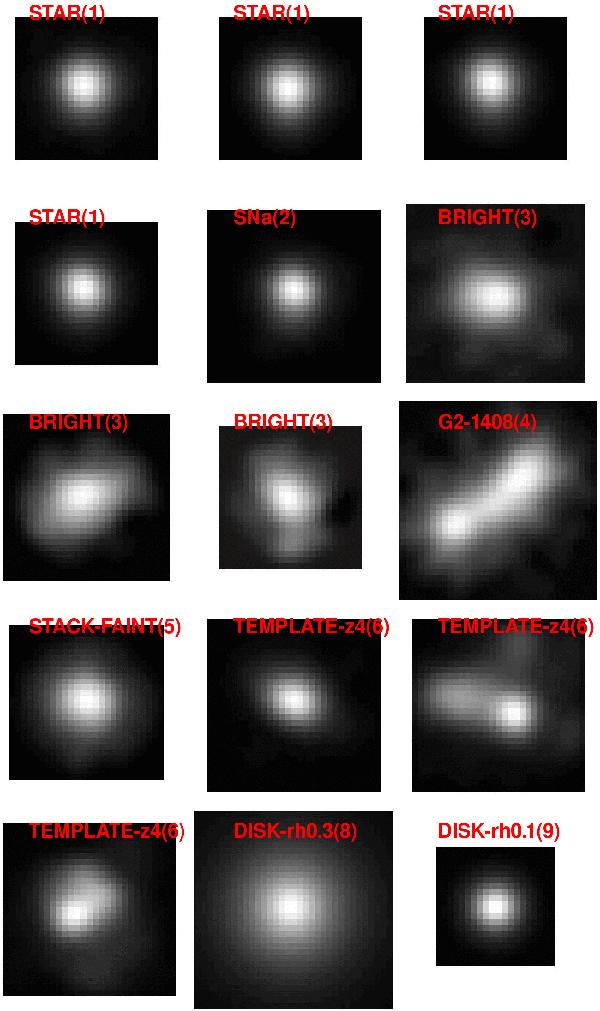Fig. 2

The different morphologies used for the simulations of WFC3 fields. From top left, the first four cutouts represent non-saturated stars in the HUDF survey (morphological template 1). The SNa candidate outlined by Oesch et al. (2010a) (template 2) is then shown, followed by the three brightest z ~ 7 candidates of the HUDF survey (template 3). The most extended galaxy is the brightest candidate in the HUDF (HUDF-1095 or G2_1408 of Castellano et al. 2010a, template 4). The first thumbnail on the fourth raw shows the stack of the faint candidates selected in the HUDF (template 5). All these thumbnails have been extracted from the J125 band of HUDF. The remaining objects are spectroscopically confirmed galaxies z ~ 4, extracted from the ACS-I band of the HUDF and shifted at z = 7 as described in the main text (template 6), and two artificial exponential disk galaxies with half light radius =0.3 arcsec (templates 7 and 8) and with half light radius =0.1 arcsec (templates 9 and 10).
Current usage metrics show cumulative count of Article Views (full-text article views including HTML views, PDF and ePub downloads, according to the available data) and Abstracts Views on Vision4Press platform.
Data correspond to usage on the plateform after 2015. The current usage metrics is available 48-96 hours after online publication and is updated daily on week days.
Initial download of the metrics may take a while.


